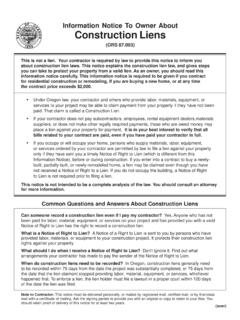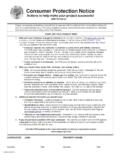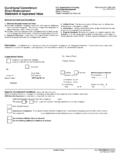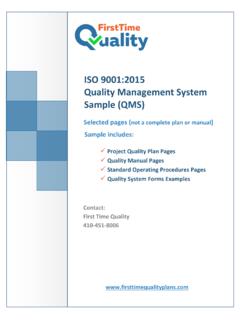Transcription of Insulated Metal Panels - All Weather Insulated Panels
1 Selection Guideline For Insulated Metal Panels 2 Copyright 2010 Metal construction Association. All rights reserved. No part of this publication may be reproduced in any form or by any means, including photocopying, or utilized by any information storage or retrieval system without permission of the copyright owner. 3 TABLE OF CONTENTS SECTION 1: ASSOCIATION BACKGROUND .. 4 SECTION 2: INTRODUCTION .. 5 What Are Insulated Metal Panels and How Are They Manufactured? .. 5 How Do IMPs Compare to Other Systems? .. 5 Why Choose Insulated Metal Wall and Roof Systems? .. 8 Performance Criteria .. 9 Panel Thickness Variation .. 10 R Value Comparison .. 11 Where Are Insulated Metal Panels Used? .. 11 Panel Selection .. 12 Finish Selection .. 12 SECTION 3: PRODUCT TESTING AND CERTIFICATION.
2 14 Fire .. 14 Structural .. 14 Listings .. 14 Thermal Transmittance .. 15 Core Physical Properties .. 15 Water Penetration .. 15 Air Infiltration .. 15 SECTION 4: PRODUCTION PROCESS .. 16 Product Description .. 17 SECTION 5: DESIGN PARAMETERS .. 19 Thermal Effects .. 19 Metal Roof End Laps .. 20 Metal Roof Slope .. 20 Metal Roof Penetrations .. 20 SECTION 6: INSTALLATION .. 21 Support Gauge and Alignment .. 21 Panel Layout .. 22 Panel Trim .. 22 Panel Clips and Fasteners .. 23 Panel Caulking and Sealants .. 23 Summary .. 23 SECTION 7: DETAIL ILLUSTRATIONS .. 24 Vertical Panel Details .. 24-27 Horizontal Panel Details .. 28 Roof Panel Details .. 29-30 ADDENDUM 1: Features and Benefits .. 31 ADDENDUM 2: Insulated Metal Panel Guide Specifications Bullets .. 32 4 Insulated Metal PANEL (IMP) WALL AND ROOF SYSTEMS SECTION 1: ASSOCIATION BACKGROUND The Metal construction Association (MCA) was formed in 1983 as a non-profit organization.
3 The primary purpose of the Association is to promote the wider use of Metal in construction . MCA unites diverse industry segments for this common purpose. One of these segments is Insulated Metal Panels . Disclaimer: This Guideline is for general information only. It is designed to highlight areas requiring consideration. Information contained in the Guideline should not be used without first securing competent advice concerning application suitability for any given building project. MCA does not assume responsibility and disclaims any representation or warranty , express or implied, that such information is suitable for any general or particular use. Anyone making use of this Guideline assumes all liability resulting from such use. The existence of this Guideline does not in any respect preclude a member or non-member of MCA from manufacturing, selling or specifying products not conforming to the Guideline, nor does the existence of an MCA Guideline preclude its voluntary use by persons other than MCA members.
4 This Guideline does not purport to address all safety problems associated with its use or all applicable regulatory requirements. It is the responsibility of the user of this Guideline to establish appropriate safety and health practices and to determine the applicability of regulatory limitations before use of the Guideline. The Metal construction Association reserves the right to change, revise, add to, or delete any data contained in this manual without prior notice. 5 SECTION 2: INTRODUCTION What Are Insulated Metal Panels and How Are They Manufactured? Since the 1960s, contractors and designers of commercial, industrial and refrigerated buildings have relied on Insulated Metal Panels for their excellent thermal efficiency, ease of installation and overall structural integrity. Insulated Metal Panels in their simplest form are rigid foam sandwiched between two sheets of coated Metal .
5 They are molded in a variety of styles and sizes depending on application. Steel or aluminum panel facings create a vapor barrier and provide long-term thermal stability. The skins are resistant to abuse and come in a multitude of colors. Panels are often factory manufactured using the foamed-in place process. Foam is injected, as a liquid or froth, between the sheets of Metal . It undergoes a chemical reaction causing it to rise and bond to the Metal skins, filling the interior cavity, creating a solid monolithic panel that maintains a consistent thermal value and resists moisture, insect and rodent infiltration. Insulated Metal Panels can also be manufactured by a laminating process. In this method, pre-cured foam board stock is adhered to preformed Metal facers with structural adhesives and placed under pressure in a platen press operation.
6 With both types of Insulated Metal Panels a factory controlled, uniform foam thickness provides consistent insulation performance. How Do IMPs Compare To Other Systems? Insulated Metal panel systems provide many of the same benefits and features found with other Metal wall and roof systems plus some unique benefits found only with foam Panels . Insulated Metal Panels are installed as a single element allowing for faster building completion in almost any kind of Weather without risk to system integrity, as opposed to multiple installation steps for other Insulated wall and roof systems. The lightweight wall and roof Panels are available in a wide range of long lasting finishes and colors. When combined with the inherent benefits of Metal facings, Insulated Metal Panels require less maintenance than other exterior systems and meet the most demanding performance requirements.
7 6 Insulated Metal Panels also offer continuous insulation values and built-in thermal breaks that provide lower heating and cooling costs to the building owner. Vapor and air infiltration barriers are easily achieved and thermal performance is enhanced, since there is no Metal conductance from exterior to interior skin. Insulated Metal Panels offer a complete concealed fastener system that typically includes the vapor barrier, air barrier and water barrier along with a high efficiency insulation system. They greatly reduce a large number of components, which normally are field assembled. On large commercial and industrial facilities as shown on this and the following pages, Insulated Metal wall systems erect very quickly. Structures such as cold storage facilities, hangars, manufacturing plants, food processing facilities, office buildings and convention centers are proven to be excellent applications.
8 On these projects, under normal wind conditions, support girt spacing in the 8-ft. to 12-ft. range is used to take advantage of the high panel strength. Also, 24 and 26 light gauge Metal skins are used with profiled or striated patterns to minimize the material cost while maintaining the structural integrity and product flatness. 7 8 Architecturally, Insulated Metal Panels also offer many design features. Joint size variations, curved and formed Panels , heavier gauge flat skins and high performance coatings are only a few. These products have also been used as components in high performance curtain walls and have been successfully tested in large job specific mockups. When compared to other product options in both Metal and non- Metal , Insulated Metal wall and roof systems offer a cost competitive high performance system that answers today s demands for quick building enclosure at a low cost while offering a wide range of design and performance features.
9 These Panels have been successfully used in a variety of non-residential markets from large light industrial/warehouse buildings and freezer-cooler applications to complex high tech architectural applications. This guideline introduces the product and covers manufacturing, performance criteria and product application items along with a feature-benefits summary, key bullets for a guide specification, and an array of sample details. Why Choose Insulated Metal Wall and Roof Systems? There are benefits for all parties involved in the building enclosure as shown in the Features and Benefits List in Addendum 1. The designer has a myriad of design options ranging from color and texture to panel width, joint size options and joint orientations. The designer can also choose product performance options ranging from panel insulation value to span length.
10 The erector has a lightweight product that erects quickly in response to fast-track schedule demands. Also the weight difference offers framing and foundation savings. The owner gets a highly energy efficient building envelope with lower heating and cooling costs. 9 Erection efficiency with Insulated Metal Panels is higher than with other products because it is less affected by Weather , and the owner gains a high performance system at one of the best life cycle costs of any product available today. Erection speed is the key to many projects today. Higher installation rates can be achieved with Insulated Metal Panels . Depending on job complexity and size, Insulated Metal Panels can be erected at a rate of up to 5,000 sq. ft. per 8-hour shift by a four-man crew on an industrial project and up to 1,100 sq. ft. per 8-hour shift by a four-man crew on an architectural project.




